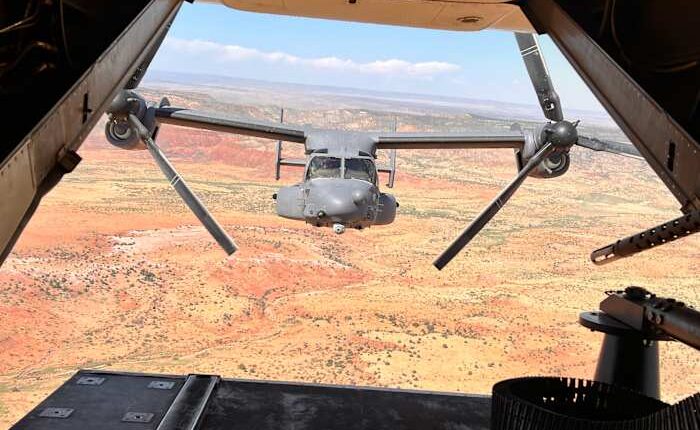
WASHINGTON – The military has mandated new safety protocols for a crucial component in all Osprey aircraft following a recent incident that exposed the same issue responsible for a deadly crash in Japan last year.
During a flight on Nov. 20 involving a CV-22B Osprey in New Mexico, the crew received alerts indicating that the metal gears within the aircraft’s transmission, referred to as the proprotor gearbox, were experiencing difficulties.
Despite losing an engine, the crew from the Air Force Special Operations Command in New Mexico managed to land the aircraft safely, drawing from the lessons learned from the Japan crash that claimed the lives of eight service members.
Investigators opened up the failed and badly damaged transmission from last month’s flight, finding the same type of metal weaknesses — called inclusions — that led to gears breaking apart in a similar way in the Japan crash in November 2023.
Following the New Mexico near-crash, all the military services grounded their Ospreys, which can fly both like a helicopter and an airplane, for the second time this year. The Marines, however, put their Ospreys back in the air days later.
Under guidelines announced Friday, all Ospreys with proprotor gearboxes under a certain number of flight hours will be subject to additional safety restrictions. The restrictions affect the newer transmissions because investigators have found that the metal weaknesses, if they are going to occur, happen early on.
The metal weaknesses have been tied to the way the alloys are manufactured. There is a hardier manufacturing method available, but it will require replacement of the expensive transmissions, a process that likely would take years to complete for all of the approximately 400 aircraft in the military’s fleet.
An in-depth investigation into the Osprey by The Associated Press found that safety issues have increased in the past five years, parts are wearing out faster than expected and that the design of the aircraft itself is directly contributing to many of the accidents.
Naval Air Systems Command, which runs the Osprey program across the military branches, said Friday that the additional safety controls “will remain in place” until the proprotor gearboxes are replaced.
“Due to operational security concerns, the specifics of the V-22 flight-hour threshold, number of aircraft affected and additional flight controls will not be released,” NAVAIR said in a statement.
Copyright 2024 The Associated Press. All rights reserved. This material may not be published, broadcast, rewritten or redistributed without permission.

















